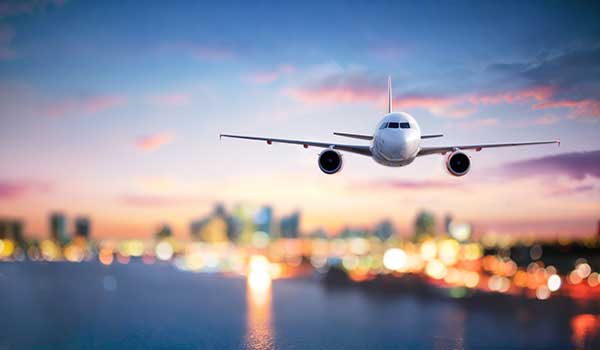U.S. carbon emissions fell by more than half a billion metric tons in 2020 — down 11% compared to 2019 — due to COVID-19 pandemic restrictions.U.S. carbon emissions fell by more than half a billion metric tons in 2020 — down 11% compared to 2019 — due to COVID-19 pandemic restrictions.
The massive drop in energy-related carbon dioxide emissions to 4.57 billion metric tons followed a slump in travel numbers coupled with the United States’ gradual switch to renewable energy sources.
In 2020, the U.S. Energy Information Agency (EIA) figures showed that coal emissions dropped 19% while there was a 17% increase in wind and solar power generation. Natural gas was the only fossil fuel to see an increase with a 3% uptick in emissions.
The United States’ drastic reduction in coal use bucked the global trend.
The International Energy Agency (IEA) reported that coal emissions in the last quarter of 2020 were 3.5% higher than the same period in 2019.
How Each Sector’s Emissions Changed
Energy-related commercial emissions fell 12% in 2020 as businesses closed and people stayed at home due to COVID-19 restrictions. Similarly, industrial emissions fell 8%.
Residential emissions reduced by 6%, despite many people spending more time indoors and working from home. The EIA attributes this figure to the increased green energy in the network from solar and wind generation rather than a decline in domestic energy consumption.
The transport sector underwent a radical alteration and one that some policymakers are looking to make a permanent shift.
Not Leaving On a Jet Plane
Transportation carbon emissions fell most dramatically by 15%, as many people stopped traveling for work or pleasure. Working from home and online meetings often replaced face-to-face reunions.
The effect on flight numbers was remarkable. In 2019, a record number of passengers — almost 1.1 billion at a rate of 2.9 million travelers every day — flew on 11.2 million commercial flights in the United States.
In 2020, overall passenger numbers were down 62% to 398 million passengers. Domestic travelers fell 59% from 812 million to 336 million, while international reduced 74% from 242 million passengers to 63 million.
The COVID-19 pandemic brought an enforced reflection about travel, and it’s starting to influence government policy.
Banning Flights in Favor of Trains
Global aviation causes around 2% of all human-induced carbon dioxide emissions. Flights are often identified as an area ripe for CO2 emission savings.
Recently, French parliamentary members voted to suspend domestic flights on routes where a direct train can cover the same distance in less than two and a half hours.
For example, short flights from Paris’ southern Orly airport to destinations like Bordeaux, Nantes, and Lyon will not run. However, Paris’s 2-hour-and-17-minute flight to London will still operate, despite the Eurostar high-speed train offering a 2-hour-and-16 minute train option to the British capital.
Some airlines in the United States have responded to the COVID travel crisis by scrapping change fees on domestic and international travel routes, in a bid to bring back travelers.
France Reduces Flights
The French ruling aims to cut carbon emissions that airlines contribute to climate change. EcoPassenger calculates journey emissions, taking into account the journey’s fuel requirements and the energy to produce the fuel.
Paris to Bordeaux is one of the suspended flights in France. Per person, the short-haul flight route of around 590km/366 miles produces 143kg/315lbs of carbon emissions, compared to 65.6kg/145lbs per person by car and 6.5kg/14.33lbs by train.
These figures consider the additional climate effects of other greenhouse gas emissions, especially for emissions in high altitudes (nitrogen oxides, ozone, water, soot, sulfur).
What Will 2021 Hold For Energy and Travel?
TripAdvisor research showed almost half of all its respondents are planning to travel internationally in 2021, most likely in the second half of the year.
In the U.S., more than a third of travelers (34%) said they’re much more likely to travel internationally in 2021 once they’ve received a COVID-19 vaccine. The same number is also planning at least three domestic trips this year.
People’s pent-up desire to travel may send transportation energy demands and carbon emissions spiraling upwards once more. These may be offset by increased renewable energy in the network, alongside ideas such as the France train alternatives to reduce emissions through policy.
The COVID-19 pandemic outcome is still uncertain, yet 2021 may prove a watershed moment for tourism and energy.
Opinion writer: Tom Shearman
The opinions, beliefs, and viewpoints expressed by the various authors do not necessarily reflect the opinions, beliefs, or viewpoints of Interactive Energy Group, LLC (IEG) or its parent companies or affiliates and may have been created by a third party contracted by IEG. Any content provided by the bloggers or authors are of their opinion and are not intended to malign any individual, organization, company, group, or anyone or anything.
Brought to you by energysavings.com
All images licensed from Adobe Stock.
Featured Image

